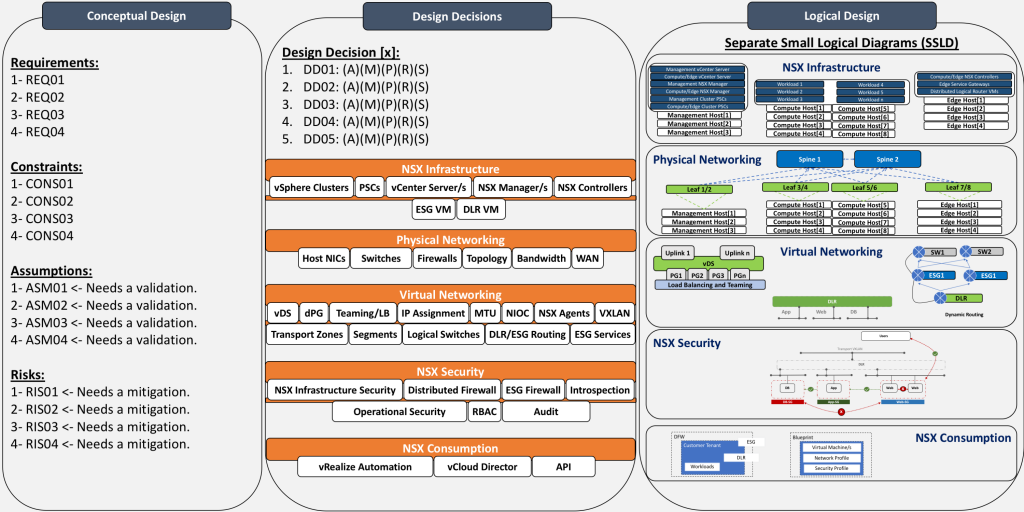VCDX-NV Design Scenario: You’re the river and you’re the raft
One of the most things that most candidates tend to not give importance until its too late, is the VCDX design scenario. Whilst the design defense is truly important to show your ability to defend your design decisions and validate that you’ve have chosen the best fit for your customer/s, the design scenario from my point of view is by far more important for your practical life.
The design scenario from a process perspective:
The scenario is meant to get the panelists to score you more on areas that you did not cover well in the blueprint (in your architecture design), or areas that they saw you have did not show skills in it during the defense.
The design scenario from an engageemnt perspective:
To be able to have reached this point, then this is something that you love and do for a living at the sametime, this is something that you wake up to every morning, this is something that triggers your need to know more, this is something that triggers you to learn more, with every customer there is a new challenge, with every meeting there is a new way to paint your art work.
This is how you need to treat the design scenario, with the same love and passion you show to real customers when you meet them, you’re there to solve their problems, you’re there because you’re the raft and you’re the river, you’re the guide and you’re the wind and they’re only the passengers.
Being in your comfort zone, doesn’t mean that you should be 100% relaxed to an extent where your dimizing the situation or disrespecting your audience, its like going to the sea, if you disrepect the sea it will drown you, if you respect the sea you will have fun and get back to the shore safely. The utmost love towards something, is having the most significant amount of fear and caution when handling it :-).
Its all about the blueprint and you:
Now to delve more into the Network Virtualization design scenario, I would like to emphasis that in every VCDX Workshop that I have attended (and I have attended most of them since they were started) it was explicitly said that ITS ALL IN THE BLUEPRINT, and this is for both stages of the certifications (defense and design), your go-to-guide is the blueprint and whatever is required from you is based on that blueprint.
Before delving into the blueprint pillars, you will need to establish a conceptual design:
- A couple of Requirements.
- A couple of Constraints.
- A couple of Assumptions.
- A couple of Risks.
My advice here would be to be very smart about:
- Reading your scenario.
- Gathering your requirements.
- Current state analysis.
The idea is that you need to be keen on what to focus, remember that the design scenario is to extract from you something that was missed in previous stages (application and defense).
That said, we could agree that the NV blueprint is about the following pillars:
- NSX Infrastructure.
- Physical Networking.
- Virtual Networking.
- NSX Security (this could have VDI in it, if let’s say your design has everything in it).
- NSX Consumption.
Based on my advice in the conceptual design section, an example would be that the panel might need you to focus on a couple of pillars and not all of the pillars. So, you will need to be very precise about they want you to show and be blunt when you have pin pointed those pillars and tell the panel that you are going to focus on 1, 2, 3 based on your requirements and in other sessions (as if you’d do with customers) you will talk more about those other pillars as to focus on the primary requirements.
For each pillar you need:
- A couple of design decisions (MAKE SURE WHEN YOU ARE WRITING THOSE TO MENTION THAT THIS IS TO SATISFY YOUR X REQUIREMENT).
- A couple of design traits when thinking about those design decisions, based on AMPRS (Availability, Manageability, Performance, Recoverability and Security)
How should it look like:
I wouldn’t say that the following diagram depicts 100% what needs to be done, but it is rather a focus slide that you can use to make sure that you’re not forgetting about anything, on the other hand during the defense because of the stress you will forget, but luckily its about the process and not the end result.
In a perfect world of mine, I would have imagined myself achieving this on a whiteboard in 45 minutes:
I hope this would bring you closer to how you would visualize an NV VCDX design scenario, and finally I would strongly be in favor of you (candidate) in finding your own way to this, you will find very good content on the Internet, and you will find a lot of methodology in terms of how you will be achieving this, but remember that it is always about the most adequate way for you to shine and show your architecture/customer handling skills.
(Abdullah)^2

Thank you Abdullah for producing and sharing this! Inspiring and helpful!
Always glad to help :).
thank you!!
Most welcome Diego :).